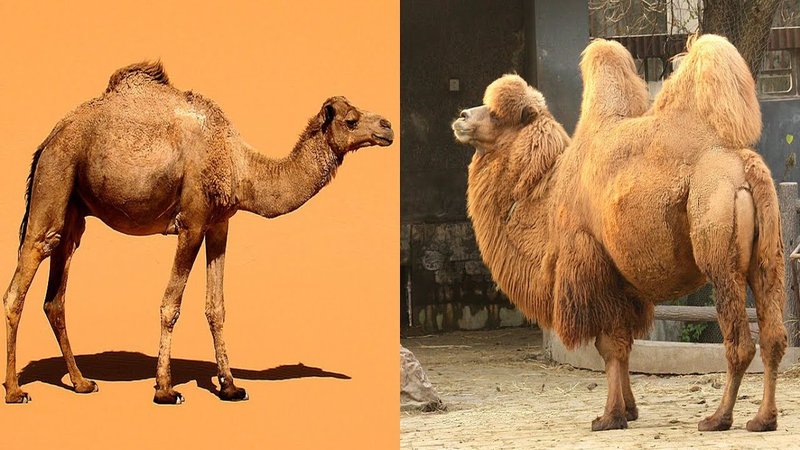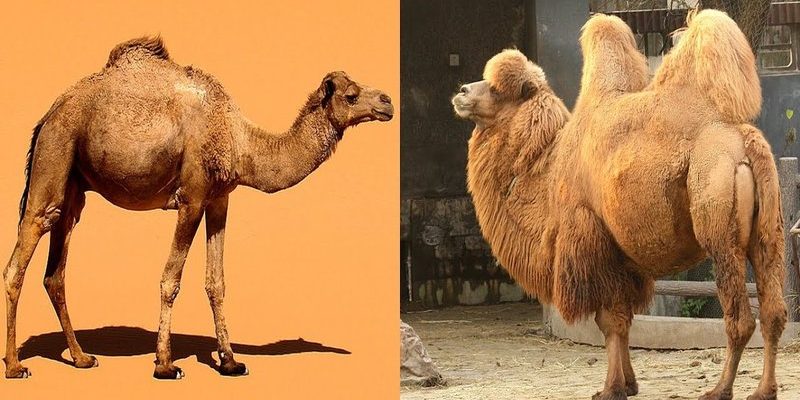
Picture this: you’re at a zoo or maybe even in a documentary, seeing various animals roaming. Some look strikingly similar to dromedaries, while others share similar behaviors or habitats. Understanding these animals can pique our curiosity and teach us more about the traits that help them thrive in their environments. So, let’s dive into the fascinating world of animals that mirror the dromedary in one way or another and learn how to tell them apart!
The Dromedary Camel: A Quick Overview
Before we jump into animals that resemble the dromedary, let’s quickly explore what makes the dromedary unique. This camel, known scientifically as *Camelus dromedarius*, is primarily found in North Africa and the Middle East. With its single hump, the dromedary can go without water for long periods, thanks to its ability to store fat in that hump.
Dromedaries are generally taller and slimmer than their two-humped cousins, the Bactrian camels. They can reach up to 7 feet in height at the hump and can weigh anywhere from 880 to 2,200 pounds. Their long legs and flat feet make them perfect for traversing sandy deserts. Also, they’re social animals, often seen in groups, and have excellent memories, allowing them to navigate harsh terrains effectively.
So, what other animals share some traits with dromedaries? Let’s find out!
1. Bactrian Camel
The Bactrian camel (*Camelus bactrianus*) is probably the most recognizable relative of the dromedary. Unlike its one-humped cousin, the Bactrian has two humps. This species primarily resides in the cold desert regions of Central Asia.
You might be wondering what else sets them apart. Bactrian camels are generally stockier and have a thicker coat, which helps them withstand colder climates. They also have more robust legs and are better at navigating rocky terrains. You could think of them as the dromedary’s tougher sibling, perfect for braving the cold and rugged landscapes.
The two camels also differ in their adaptability to water. While dromedaries can go for long stretches without water, Bactrians require water more frequently, especially when it’s warm.
2. Llama
The llama is another fascinating animal that draws some similarities to the dromedary, especially regarding its use as a pack animal. Originally from the Andes mountains of South America, llamas are smaller and have a more elongated neck.
One key connection is their temperament; both animals are known for being gentle and social. Llamas can be quite vocal, using a range of sounds to communicate, while dromedaries are typically more silent unless provoked. You might spot a llama in the Andean highlands or even at a petting zoo, where they’re often loved for their friendly demeanor.
But here’s the kicker: while dromedaries can thrive in hot, arid environments, llamas are more suited for cooler, elevated terrains. They also have different dietary needs, with llamas primarily grazing on grass and shrubs.
3. Alpaca
Next on our list is the alpaca, another South American relative of the llama. Though smaller in size, alpacas have some distinct similarities to both camels and llamas. They’ve got a fluffy coat, which helps keep them warm in cooler climates.
Alpacas tend to be more specialized in their wool, known for being super soft and used in various textiles. If you’ve ever felt alpaca wool, you’ll know it’s like hugging a warm cloud! However, unlike dromedaries, alpacas do not have a hump and are primarily raised for their fiber, rather than as pack animals.
The key difference here is their temperament. Alpacas are typically more timid than llamas and dromedaries. They often rely on their herd for comfort, making them somewhat more social.
4. Guanaco
The guanaco is another animal that boasts similar traits to the dromedary. Found primarily in South America, this wild relative of the llama is adapted to the harsh terrains of the Patagonian steppe.
Guanacos are slightly smaller than llamas but share some visual similarities, like the long neck and thin legs. They’re also known for their adaptability to different environments, much like dromedaries. While a dromedary might be trotting around the desert, a guanaco is likely navigating through scrubland or rocky hills.
They are also known for their endurance and can travel long distances in search of food and water, just like dromedaries. The main difference is that guanacos are wild animals, while dromedaries have been domesticated for thousands of years.
5. Vicuna
The vicuna is yet another fascinating relative, closely related to both llamas and alpacas. These animals are famous for their incredibly soft wool and are often found in the high altitudes of the Andes.
Vicunas are smaller and more slender than their camelids cousins. They roam freely and are more agile than the heavier dromedary, thriving in cooler climates and grasslands. While dromedaries have evolved to handle the heat of the desert, vicunas have adapted to survive at high altitudes where the temperature can drop significantly.
What’s interesting is that vicunas are known to be sensitive and skittish around humans. They tend to communicate through a series of high-pitched calls, which makes them more vocal than dromedaries.
6. Oryx
Moving away from the camelids, the oryx is a striking antelope that shares some physical traits with the dromedary. Found in the hot deserts of Africa and the Middle East, oryxes are built for hot climates.
These animals possess long straight horns and have a similar body shape to dromedaries. They’re remarkable survivors, able to go long periods without water by getting moisture from the plants they eat. Like dromedaries, oryxes can handle extreme heat and are known for their stamina.
However, unlike dromedaries, oryxes are a bit more solitary but can often be seen in small groups, especially when coming together to drink water.
7. Addax
The addax, also known as the white antelope or screwhorn antelope, is another desert-dweller that can withstand extreme heat. Native to the Sahara Desert, these animals are quite remarkable in their adaptations.
Addaxes have a light-colored coat that reflects sunlight and long, twisted horns. Just like the dromedary, they can survive for long periods without water. Interestingly, addaxes are almost extinct, with efforts in place to protect their dwindling population.
Unlike dromedaries, addaxes tend to be more reclusive, thriving in very remote areas. They have a more erratic lifestyle compared to the more domesticated dromedary, which serves as a reliable pack animal for humans.
8. Horse
Finally, we have the horse, an animal that has shared a deep bond with humans for centuries. While horses are entirely different from dromedaries in many aspects, they do share some common traits—especially when it comes to their utility.
Horses, like dromedaries, can be trained to carry loads and navigate over various terrains. Both animals are incredibly hardy, but where they differ significantly is in the environments they thrive in. Horses can adapt to both hot and cooler climates, making them more versatile in terms of habitats than dromedaries.
Moreover, horses exhibit a wider range of temperaments and sizes. While dromedaries are generally calm and composed, depending on the breed, horses can be more spirited and energetic.
So there you have it—eight fascinating animals that share similarities with the dromedary! Whether it’s adaptations to harsh environments, social structures, or even physical traits, these animals give us a peek into nature’s wonderful creativity.
From the Bactrian camel with its two humps to the agile vicuna high in the Andes, each of these animals has unique qualities that help them survive. Exploring these similarities not only highlights the incredible diversity of wildlife but also reminds us of the rich relationships we share with these creatures.
The next time you encounter a dromedary or one of its similar counterparts, you can appreciate not just their beauty but also their remarkable adaptations. Nature truly has a way of surprising us, and by learning about these animals, we grow in understanding and appreciation for the world around us.

